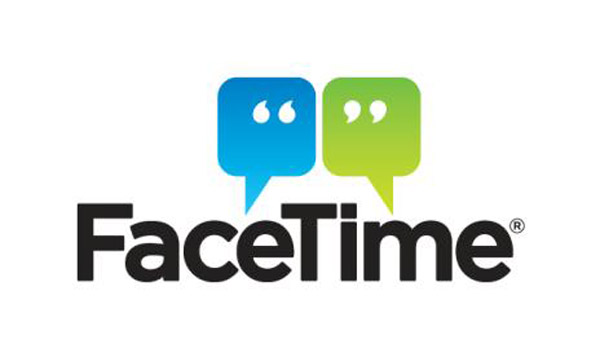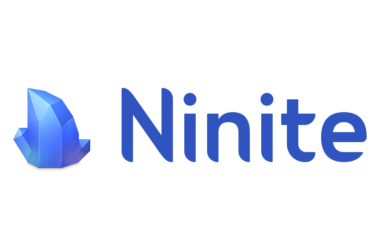In today’s fast-paced digital landscape, staying connected with loved ones, colleagues, and friends has become an integral part of our lives. Video calling has emerged as a cornerstone of modern communication, offering a personal touch that transcends distances. While Facetime, Apple’s renowned video calling platform, has captured the hearts of many, there are instances when users seek alternatives that cater to their unique preferences and needs. In this comprehensive guide, we delve into the world of Facetime alternatives, exploring their features, limitations, and factors to consider when selecting the perfect fit for your video calling requirements.
Unveiling Facetime’s Features and Distinctiveness

Facetime, Apple’s proprietary video calling app, offers users a seamless way to connect with others through high-quality audio and video. With its integration into the Apple ecosystem, Facetime boasts a user-friendly interface, end-to-end encryption, and easy activation on iOS devices. However, its exclusivity to Apple devices and limitations in cross-platform compatibility have led users to explore Facetime alternative options that align with their diverse technological preferences.
Facetime’s Unique Features
1. Seamless Integration: Connecting Apple Ecosystem
Facetime shines in its seamless integration within the Apple ecosystem. The convenience of initiating video calls directly from contacts, messages, and even Siri showcases Apple’s commitment to a unified user experience. The effortless flow between Facetime and other Apple apps enhances the platform’s appeal to loyal Apple users.
2. High-Quality Video and Audio: The Joy of Clear Conversations
At the heart of Facetime’s appeal lies its ability to deliver high-quality video and audio. Crystal-clear visuals and crisp sound reproduction create an immersive communication experience. This commitment to excellence in both audio and video quality sets Facetime apart as a benchmark for video calling standards.
3. User-Friendly Interface: Intuitiveness at Its Core
Facetime’s user-friendly interface is designed to minimize barriers to entry. With its intuitive layout, even those less familiar with technology can navigate the app effortlessly. From initiating calls to toggling between front and rear cameras, Facetime’s simplicity contributes to its widespread adoption.
4. End-to-End Encryption: A Secure Haven
Security is a top priority in today’s digital age, and Facetime addresses this concern with end-to-end encryption. This means that conversations remain private and protected from unauthorized access. Apple’s commitment to user privacy remains evident in this robust security feature.
Why Look For A FaceTime Alternative?

While Facetime offers an exceptional video calling experience, there are various reasons why individuals and businesses might seek Facetime alternatives that better align with their requirements. Let’s explore some of the key factors driving the search for a suitable Facetime alternative:
1. Cross-Platform Compatibility: Connecting Beyond Boundaries
Facetime’s exclusivity to Apple devices poses a challenge when trying to connect with friends or colleagues who use different operating systems. The need for seamless communication transcends platform boundaries, urging users to seek Facetime alternatives that bridge the gap and enable them to stay in touch regardless of device preferences.
2. Business and Professional Needs: Beyond Casual Conversations
For businesses and professionals, video communication extends beyond casual conversations. Collaborative features, integrations with productivity tools, and enhanced security become paramount. The search for alternatives that cater to these specific needs is driven by the desire for efficient virtual meetings, presentations, and teamwork.
3. Privacy Concerns: Elevating Data Protection
While Facetime boasts end-to-end encryption, some users may seek Facetime alternatives that offer an extra layer of privacy and security. Whether it’s confidential business discussions or personal matters, the assurance of robust data protection is a driving force behind the exploration of alternative platforms.
4. Feature Customization: Tailoring the Experience
Every user has unique preferences when it comes to video calling features. Some may prioritize screen sharing for presentations, while others value real-time captioning for accessibility. Exploring Facetime alternatives allows users to find platforms that align precisely with their feature preferences, ensuring a tailored communication experience.
The Quest for the Ideal Facetime Alternative: A World of Options

While Facetime offers an exceptional video calling experience, there are instances when users seek alternatives to bridge the gap between different platforms and preferences. Let’s explore some of the most popular Facetime alternatives that have gained prominence in the realm of video communication:
1. Skype: Bridging the Platform Gap with Versatility
Skype stands as one of the pioneering video calling platforms, enabling users to connect seamlessly across various devices and operating systems. Beyond its video calling capabilities, Skype offers features like screen sharing and group calls, making it a versatile choice for both personal and professional interactions.
2. Zoom: Redefining Video Conferencing for Diverse Needs
Zoom’s impact on virtual meetings and gatherings is undeniable. Its user-friendly interface and features like breakout rooms and virtual backgrounds cater to a wide range of scenarios, from business conferences to educational webinars and social hangouts.
3. Microsoft Teams: Collaborative Excellence
Microsoft Teams goes beyond video calling, offering a comprehensive, collaborative workspace. With file sharing, real-time document editing, and integration with Office apps, Teams serves as a hub for team communication and project management.
4. Google Meet: The Ultimate G Suite Integration
Integrated with Google Workspace, Google Meet provides a seamless video-calling experience. Features like noise cancellation and real-time captioning ensure effective communication, whether it’s a remote work meeting or a virtual classroom session.
5. WhatsApp: Simplified Communication with Familiarity
WhatsApp’s popularity lies in its user-friendly design and seamless integration with messaging. End-to-end encrypted video calls and the ability to switch from chats to calls effortlessly make it a preferred choice for staying connected with friends and family.
6. Telegram: Privacy-First Communication
Telegram’s commitment to privacy extends to its video calling feature. With support for group video calls and interactive features like “Raise Hand,” Telegram caters to those who value secure communication without compromising on convenience.
7. Signal: Leading the Pack in Security
Signal’s reputation for privacy and security makes it an attractive Facetime alternative. Encrypted video calls and a focus on data protection resonate with users seeking a communication platform that prioritizes their confidentiality.
8. Viber: Communication with a Playful Twist
Viber strikes a balance between video calling and messaging, offering features like video messages and a wide range of stickers. Its emphasis on fun and creativity sets it apart in the realm of communication apps.
9. Jitsi Meet: Open-Source Simplicity and Transparency
Jitsi Meet’s open-source nature emphasizes transparency and simplicity. With no account creation required, it’s a straightforward option for secure video conferencing, making it an excellent choice for those who value privacy.
10. Discord: Beyond Gaming, Embracing Community
Originally known for gaming communication, Discord’s video calling feature has expanded its horizons. Communities, study groups, and friends appreciate its high-quality audio and video capabilities, making it a versatile communication platform.
Factors to Consider When Choosing the Perfect Facetime Alternative

Selecting the ideal Facetime alternative requires thoughtful consideration of various factors to ensure the chosen platform aligns with your specific needs and preferences. Here are some key aspects to ponder:
1. Platform Compatibility: A Bridge Across Devices
Ensure the chosen Facetime alternative is compatible with the devices and operating systems used by you and your contacts. This compatibility ensures that you can communicate seamlessly without constraints, regardless of the devices you or your contacts are using.
2. Features and Functionality: Tailoring Your Experience
Evaluate the features that matter most to you. Whether it’s advanced screen sharing for presentations, interactive whiteboards for collaboration, or virtual backgrounds for fun, the right alternative should offer the features you need to enhance your communication experience.
3. Security and Privacy: Shielding Your Conversations
If privacy is a concern, prioritize alternatives that offer end-to-end encryption and robust security measures. Your conversations should remain confidential and protected from any unauthorized access, ensuring that your personal and professional discussions are secure.
4. User Interface and Accessibility: Navigating with Ease
The user interface of your chosen alternative should be intuitive and user-friendly. Consider platforms that allow both tech-savvy individuals and those less familiar with technology to navigate the app effortlessly. An accessible interface ensures a smooth and enjoyable communication experience for all users.
5. Cross-Device Synchronization: Seamlessly Switching Devices
In today’s interconnected world, the ability to transition between devices is essential. Choose an alternative that offers cross-device synchronization, enabling you to seamlessly switch from a smartphone to a tablet or computer without interruption.
In Conclusion
As the digital landscape continues to evolve, the search for the perfect Facetime alternative becomes more relevant than ever. While Facetime boasts exceptional features, the world of video calling offers a myriad of alternatives that cater to diverse preferences. Whether you prioritize cross-platform compatibility, advanced features, enhanced security, user-friendly interfaces, or versatility, the alternatives mentioned above provide a spectrum of options to elevate your video communication experience.









